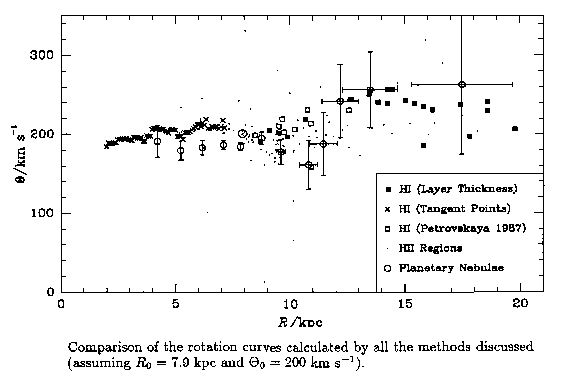
In the outer part of the Galaxy, we have to use "standard candles," so that we can obtain both distances and line-of-sight velocities.
Combining the results from these methods, we obtain the following estimate for the Milky Way rotation curve:

As with most external spiral galaxies, the rotation curve is flat, or even somewhat rising, out to the last observed point. If the known matter in the Milky Way (stars, gas, dust) were providing all the mass, then we would expect the rotation curve to decline at large radii. The absence of such a decline forces us to conclude that our galaxy (and others like it) must contain an additional massive halo of "dark matter."
![[Contents]](/PH308/contents.gif)
![[Exam Question]](/PH308/examq.gif)
![[Exam Question]](/PH308/examq.gif)